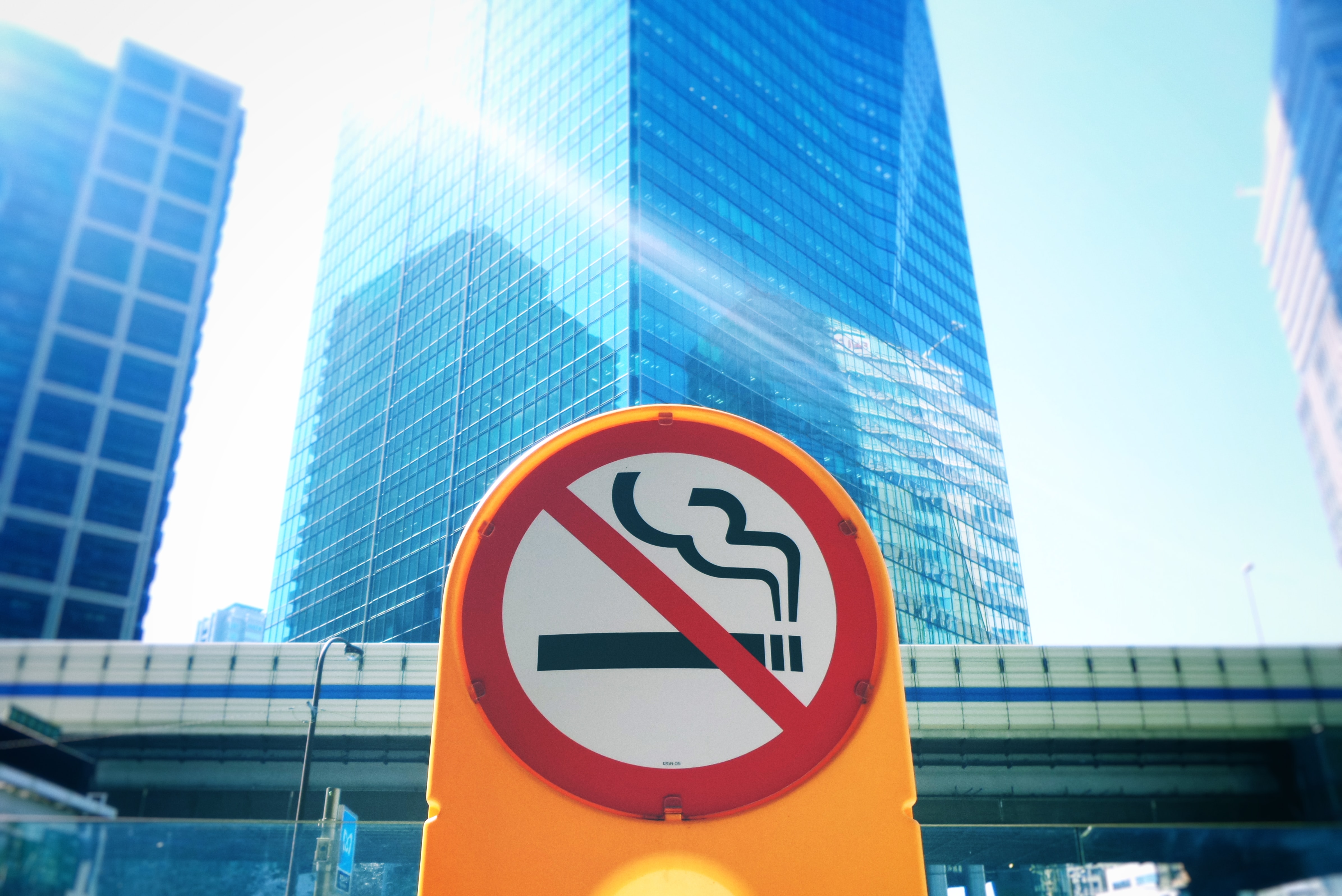
Photo provided courtesy of Unsplash.com
By: Elizabeth Fitch, Staff Writer
When smoking tobacco cigarettes first became customary in the 1600’s, it was because advertisements portrayed cigarettes as a symbol of glamour, status, and wealth. Smoking was popular. It was encouraged. The negative effects of tobacco were either unknown or blissfully ignored. The birth defects, the cardiovascular diseases, the respiratory diseases, the infertilities, and the hundreds of thousands of deaths per year were all blissfully ignored.
By the 1930’s, the link between cancer and cigarettes began to surface.[1] However, newspapers refused to report medical findings in fear of offending major tobacco companies,[2] allowing marketing campaigns to become even more aggressive.[3] Women were used to make smoking look sexy and feminine. Soldiers were given rations of cigarettes; food and cigarettes were prioritized equally.[4] Nicotine addictions resulted in hundreds of thousands of loyal consumers.
It wasn’t until the 1960’s that more attention was finally brought to the deadly effects of tobacco products.[5] Lawsuits began to criticize the industry; plaintiffs alleged product liability, negligent advertising, fraud, and violations of state consumer protection statutes.[6] In 1988, Cipollone v. Liggett Group made history by ruling in favor of a smoker who had died of lung cancer,[7] forcing tobacco manufactures to acknowledge their faults. Perceptions began to change, slowly. Reformed laws outlined age limits on purchasing tobacco products, and companies partook in slightly more responsible advertising methods.[8] However, despite these half-hearted attempts and the wide-spread knowledge of the fatal effects of these products, they are still used today. They are, almost shockingly, still legal.
Today, some of the nation’s largest tobacco companies have started producing electronic cigarettes (e-cigarettes) in attempt to help society quit this deadly habit for good.[9] Or so they say. Instead of the common tobacco filled cigarette, an e-cigarette is a battery-operated device from which one inhales an aerosol containing nicotine, flavorings, and other chemicals.[10]
Advertisements portray e-cigarettes as a healthier alternative to help adults quit smoking. However, studies have already found the vapor from an e-cigarette contains known carcinogens, ultrafine metal particles, and flavorant chemicals linked directly to mouth, lung, heart and respiratory diseases.[11] It seems that in reality, tobacco companies invented a tool that’s quickly priming a new generation for nicotine addictions and increased tobacco use instead.[12] Regrettably, the use of e-cigarettes is higher among high school students than adults.[13] It is so much higher that this has been labeled the youth nicotine addiction epidemic.[14]
The media attention this epidemic received has finally forced companies like Juul, one of the more popular e-cigarette brands, to speak up.[15] Juul used words such as “safe” and “alternative” in their marketing campaigns, inopportunely leading children to believe that these tobacco products were harmless. Juul continues to attract kids by selling flavors such as Fruit Loops, bubble gum, and mint.[16] Dr. Winickoff points out that children are introduced to flavors like mint at a very early age, from candy canes to toothpaste; Juul cannot pretend they’re unaware of this truth for much longer.[17]
FDA Commissioner Ned Sharpless concurs. He states, “Regardless of where products like e-cigarettes fall on the continuum of tobacco product risk, the law is clear that, before marketing tobacco products for reduced risk, companies must demonstrate with scientific evidence that their specific product does in fact pose less risk or is less harmful… Juul has ignored the law, and very concerningly, has made some of these statements in school to our nation’s youth.”[18]
Fortunately, society is starting to act. The Trump Administration has voiced that it plans to ban the sale of non-tobacco flavored e-cigarettes in hopes “to reverse the deeply concerning epidemic of youth e-cigarette use that is impacting children, families, schools and communities” everywhere.[19] Within the last month, San Francisco, Massachusetts, New York and Michigan put a ban on all flavored e-cigarettes.[20] Now, schools across the country are suing Juul Labs, alleging that it has targeted and endangered teenagers in marketing and provoked the epidemic, just to get paid at the children’s expense.[21] More and more districts are joining in the wave of litigation against tobacco companies daily in fear that we are only beginning to learn the possible risks of introducing nicotine to young, developing brains.[22] Those contending will not let history repeat itself.
Unsurprisingly, tobacco businesses and their loyally-addicted customers will not go down without a fight. “This shameless attempt at backdoor prohibition will close down several hundred Michigan small businesses and could send tens of thousands of ex-smokers back to deadly combustible cigarettes,” Greg Conley, president of the American Vaping Association stated.[23] “We look forward to supporting the lawsuits that now appear necessary to protect the right of adults to access these harm reduction products.”[24]
The epidemic is real, and the epidemic is now. It’s not just adults, high school students, or even middle school students. The youngest student to get caught with a vape pen was in fourth grade, stated superintendent John Allison. “The parent was very upset because they had purchased it for their student… They couldn’t understand why we were concerned. I had to educate them. It contains nicotine. It’s dangerous. It’s addictive. And they were mortified.”[25]
[1] https://ecigarettereviewed.com/the-history-of-cigarettes/
[2] https://www.cancercouncil.com.au/31899/uncategorized/a-brief-history-of-smoking/
[3] https://ecigarettereviewed.com/the-history-of-cigarettes/
[4] https://tobaccofreelife.org/tobacco/tobacco-history/
[5] https://ecigarettereviewed.com/the-history-of-cigarettes/
[6] https://www.nolo.com/legal-encyclopedia/tobacco-litigation-history-and-development-32202.html
[7] https://www.tortmuseum.org/the-tobacco-cases/
[8] https://ecigarettereviewed.com/the-history-of-cigarettes/
[9] https://time.com/5485247/juul-altria-investment/
[10] https://www.drugabuse.gov/publications/drugfacts/electronic-cigarettes-e-cigarettes
[11] https://e-cigarettes.surgeongeneral.gov/
[12] https://time.com/5442252/are-e-cigarettes-safe/
[13] https://e-cigarettes.surgeongeneral.gov/
[14] https://oversight.house.gov/legislation/hearings/examining-juul-s-role-in-the-youth-nicotine-epidemic-part-i
[18] https://www.cnbc.com/2019/09/09/fda-says-juul-illegally-promoted-its-e-cigarettes-as-less-harmful-than-cigarettes.html
[19] https://www.nbcnews.com/politics/politics-news/trump-administration-meeting-address-vaping-crisis-n1052396
[20] Id.
[21] https://www.npr.org/2019/10/09/768591310/school-districts-sue-juul-saying-student-vaping-drains-resources
[22] Id.
[23] https://www.washingtonpost.com/health/michigan-becomes-first-state-to-ban-flavored-e-cigarettes
[24] Id.
[25] https://www.npr.org/2019/10/09/768591310/school-districts-sue-juul-saying-student-vaping-drains-resources (emphasis added).